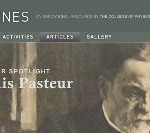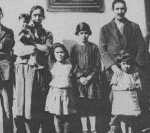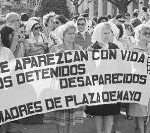Mar 2024
Birth, reproductive rights, and policies towards women in Rio de Janeiro are explored in two articles published in HCS-Manguinhos. They were published in the dossier “Labor, childbirth and infant mortality: knowledge, reflections and perspectives”, from 2018.

Birthing scene at Casa de Parto David Capistrano Filho (Photo by Adriana Medeiros, 2014).
In the paper The birthing house as a place for birth: contextualizing the Rio de Janeiro birthing house (HCSM Oct./Dec. 2018), Ilana Löwy (CERMES , France) explores women’s experiences in Casa de Parto David Capistrano Filho (CPDCF), a service offered by Brazilian public health system (SUS). CPDF shares with other birthing houses the promotion of exclusively natural, physiological, and de-medicalized childbirth and full control by non-medical staff (nurses, midwives) of the birth process. The paper concludes that women who give birth at CPDCF report they are satisfied with their experience. The main reason they give for their satisfaction is the individualized attention and care they receive.
In early twentieth-century Rio de Janeiro, one in eight pregnancies ended in a stillbirth. The possibility of maternal death during childbirth also loomed large. Medical and governmental efforts tried to combat these statistics, but no real improvements in women’s reproductive health occurred before 1940.
The article Birthing life and death: women’s reproductive health in early twentieth-century Rio de Janeiro, by Dr.Cassia Roth (Universidade da Georgia), shows that elevated stillbirth and maternal mortality rates marked women’s reproductive years, despite official efforts to medicalize childbirth and increase access to clinical healthcare. Syphilis and obstetric complications during childbirth were the main causes of stillbirths, while puerperal fever led maternal death rates.

Ilana Lowy (Cermes/Paris) and Cassia Roth (Universidade da Georgia)
The two researchers will be at Fiocruz on 16/05, participating in the event “Encontro as Quintas,” whose theme is “From interrupted justice to reproductive injustice: history, health emergencies and abortion in Brazil.”
Related articles:
:
Löwy, Ilana. The birthing house as a place for birth: contextualizing the Rio de Janeiro birthing house. Hist. cienc. saude-Manguinhos, Dec 2018, vol.25, no.4.
Medeiros, Adriana. A Casa de Parto David Capistrano Filho pelas lentes de uma fotógrafa. Hist. cienc. saude-Manguinhos, Dez 2018, vol.25, no.4.
A dark reality – Cassia Roth, from the History Department at the University of California, Los Angeles, explains the connection between state policies towards reproduction in early-twentieth-century Brazil and the current situation in women’s reproductive health.
Zika virus and rubella: similarities and differences – Researcher Ilana Löwy, from the Institut National de la Sante et de la Recherche Médicale Paris, traces a parallel between the current zika epidemics in Brazil and past rubella outbreaks.










